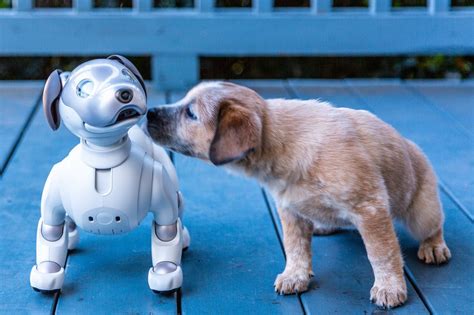Introduction

The rise of artificial intelligence (AI) is rapidly transforming various industries, and the pet industry is no exception. AI robot pets are becoming increasingly popular, offering unique advantages over traditional real pets. While both AI robot pets and real pets have their own set of pros and cons, this article will delve into a comprehensive comparison to help you make an informed decision about which one suits your needs best in 2025.
Comparison Table
| Feature | AI Robot Pet | Real Pet |
|---|---|---|
| Companionship | Provides simulated companionship through interactive features | Offers genuine emotional connection and love |
| Maintenance | Low maintenance, no feeding or grooming required | Requires regular feeding, grooming, and veterinary care |
| Cost | Typically more expensive than real pets | Can be more affordable in the long run |
| Health | No health concerns | Requires regular vet visits and may experience health issues |
| Safety | No risks of allergies or injuries | Potential risks of bites or scratches |
| Customization | Can be personalized with different features and appearances | Limited customization options |
| Mobility | Can be easily transported and controlled | Requires space and may need to be walked or trained |
Benefits of AI Robot Pets
- Convenience: AI robot pets offer the convenience of companionship without the hassle of real pets. They require minimal maintenance and can be easily taken anywhere.
- Hypoallergenic: AI robot pets are ideal for individuals with allergies to real pets.
- Interactive: Many AI robot pets come with interactive features that provide stimulation and entertainment.
- Educational: Some AI robot pets can assist with education by providing information or teaching languages.
Benefits of Real Pets
- Unconditional love: Real pets offer genuine emotional connection and unconditional love, which can benefit mental and physical well-being.
- Health benefits: Studies have shown that interacting with real pets can reduce stress, lower blood pressure, and improve heart health.
- Exercise: Real pets encourage owners to get exercise through walks or playtime.
- Companionship: Real pets provide constant companionship and can help prevent loneliness and isolation.
Factors to Consider
When choosing between an AI robot pet and a real pet, several factors should be considered:
- Lifestyle: Those with busy or unpredictable schedules may prefer the convenience of an AI robot pet.
- Allergies: Individuals with allergies should opt for AI robot pets to avoid potential health risks.
- Emotion: For those seeking genuine emotional connection, a real pet may be a better choice.
- Cost: AI robot pets can be more expensive initially, while real pets require ongoing expenses for food, grooming, and veterinary care.
Conclusion
Ultimately, the decision between an AI robot pet and a real pet is a personal one. Both options have their own unique advantages and disadvantages. AI robot pets offer convenience, interaction, and reduced maintenance, while real pets provide genuine companionship, health benefits, and unconditional love. By carefully considering the factors discussed in this article, you can make an informed decision that aligns with your specific needs and preferences.
Future Outlook
As AI continues to advance, AI robot pets are expected to become even more sophisticated and lifelike. They may offer enhanced features such as advanced emotional intelligence, personalized care, and remote connectivity. The integration of AI and robotics in the pet industry holds immense potential for revolutionizing the way we interact with and care for our companion animals.
Additional Resources





















